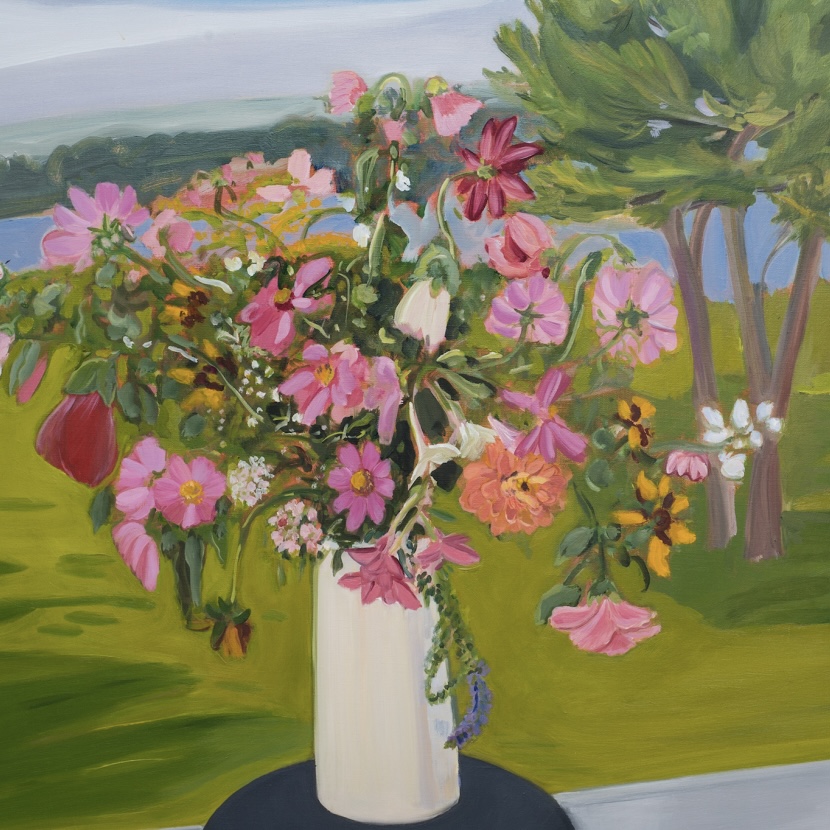I found out about Jane Freilicher (1924–2014. Pronounced “Fry-licker”) this year when Professor Brian Fee from Concordia University Irvine recommended I research her.
And what a good suggestion! She has been such an encouragement to me.
- She Painted Authentically And Did Not Try To Follow Trends
So many artists in her time painted in an abstract expressionist style, and she did make a few in that style early in her career, such as Small Harvest Moon, but she ultimately painted for the reasons that drew her to art—not to try to fit in with the current movement.
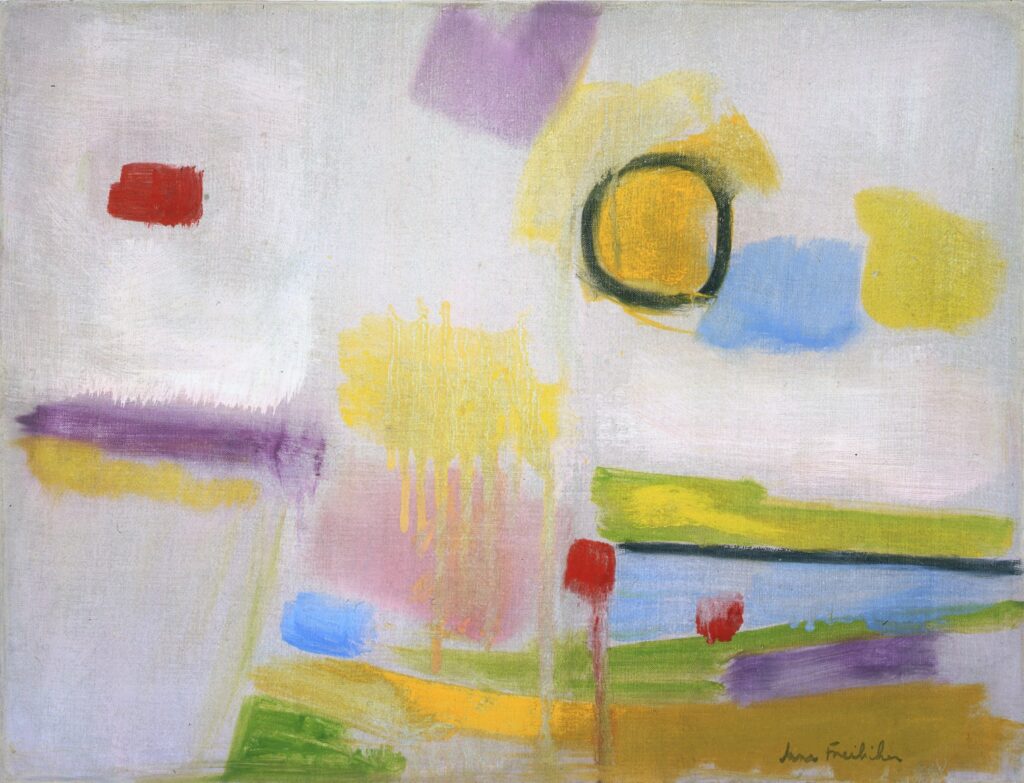
“To strain after innovation, to worry about being ‘on the cutting edge’—a phrase I hate—reflects concern for a place in history or for one’s career rather than for the authenticity of one’s own painting.” — Jane Freilicher1
She said that she became interested in art when she was very young “not for fame or achievement, but out of a romantic inclination to beautiful things.”2
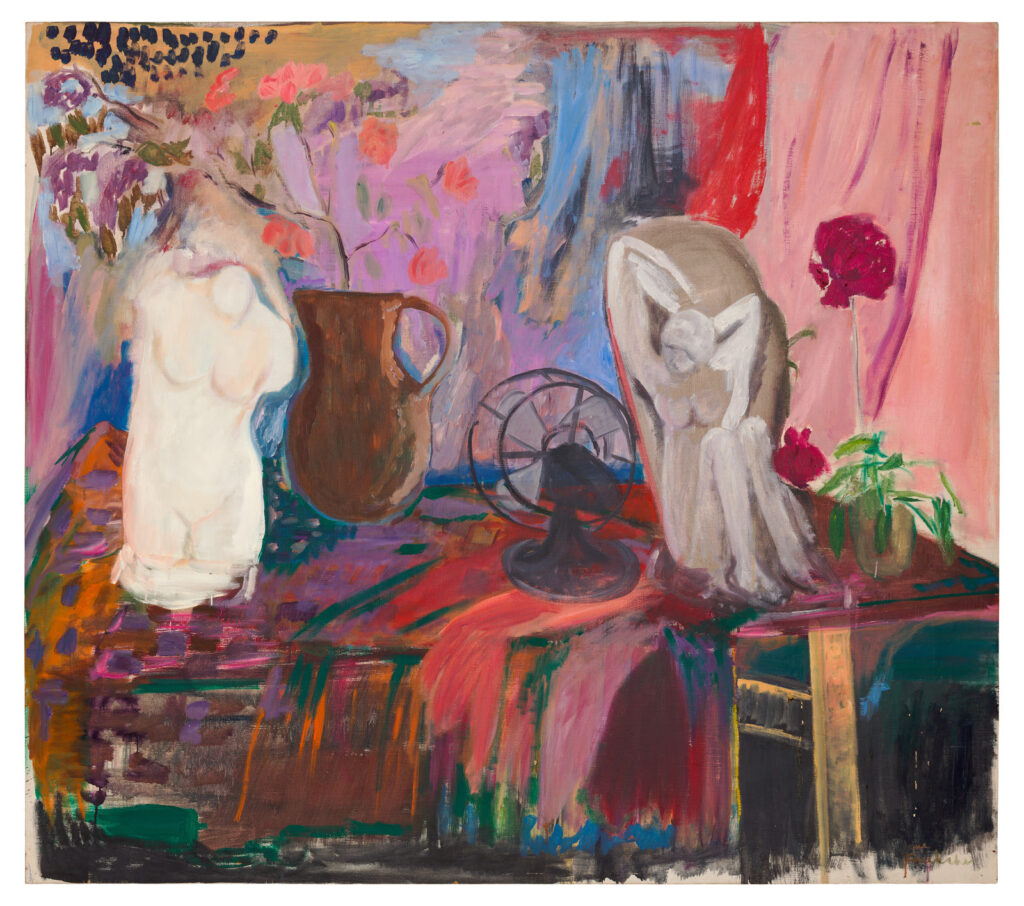
This is SO inspiring to me because I love painting because of this same romantic inclination to beautiful things.
And I have often doubted if this is a good enough reason to make art because of how not-on-trend painting for the love of beauty has been in the art world lately.
But her works, which were “an emotional reaction to something I find beautiful in the subject” became highly regarded within her lifetime.3
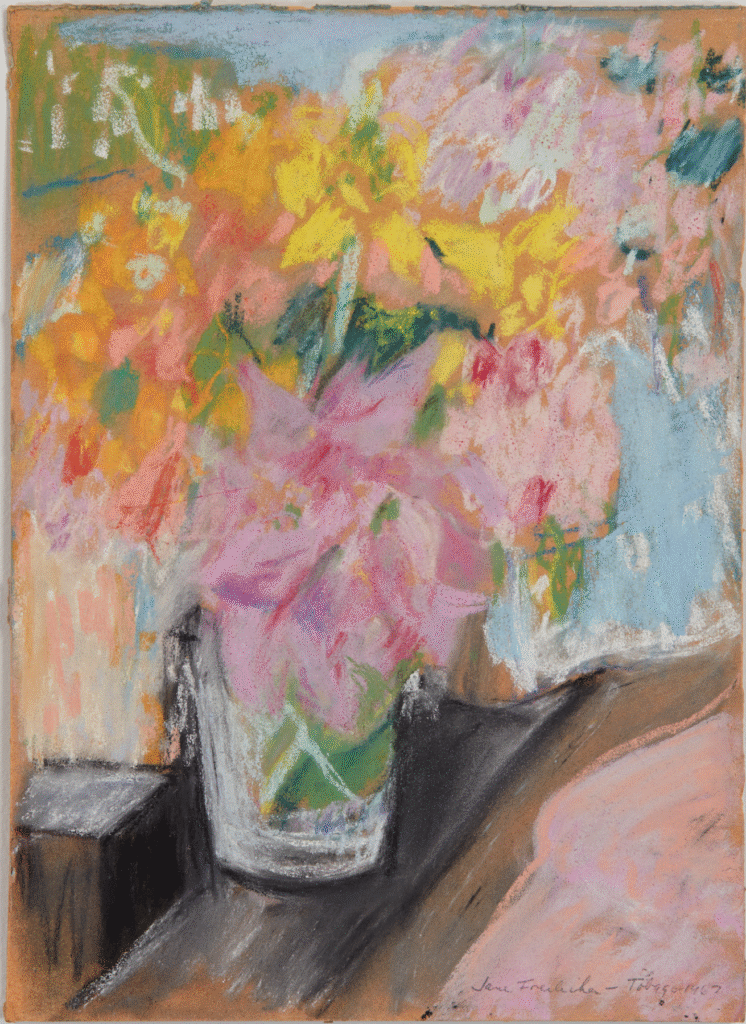
- She Painted Real Scenes That Were Around Her Every Day
Much like Childe Hassam recommends!
“I believe the man who will go down to posterity is the man who paints his own time and the scenes of everyday life around him.” — Childe Hassam4
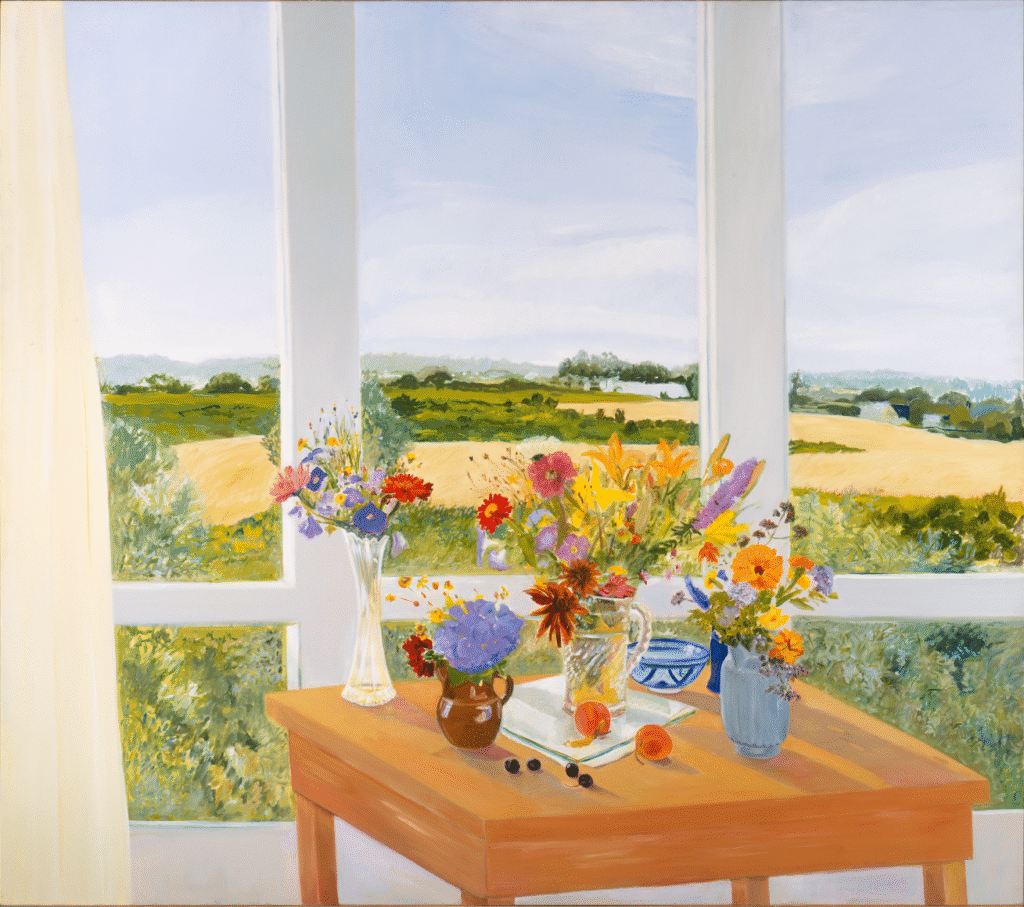
For most of her career, she “engaged but one subject: still lifes, typically of flowers arranged on windowsills with a city or country vista in the background.”5
This gave her something real and interesting to start with, but lots of room to imbue each painting with her internal emotions.
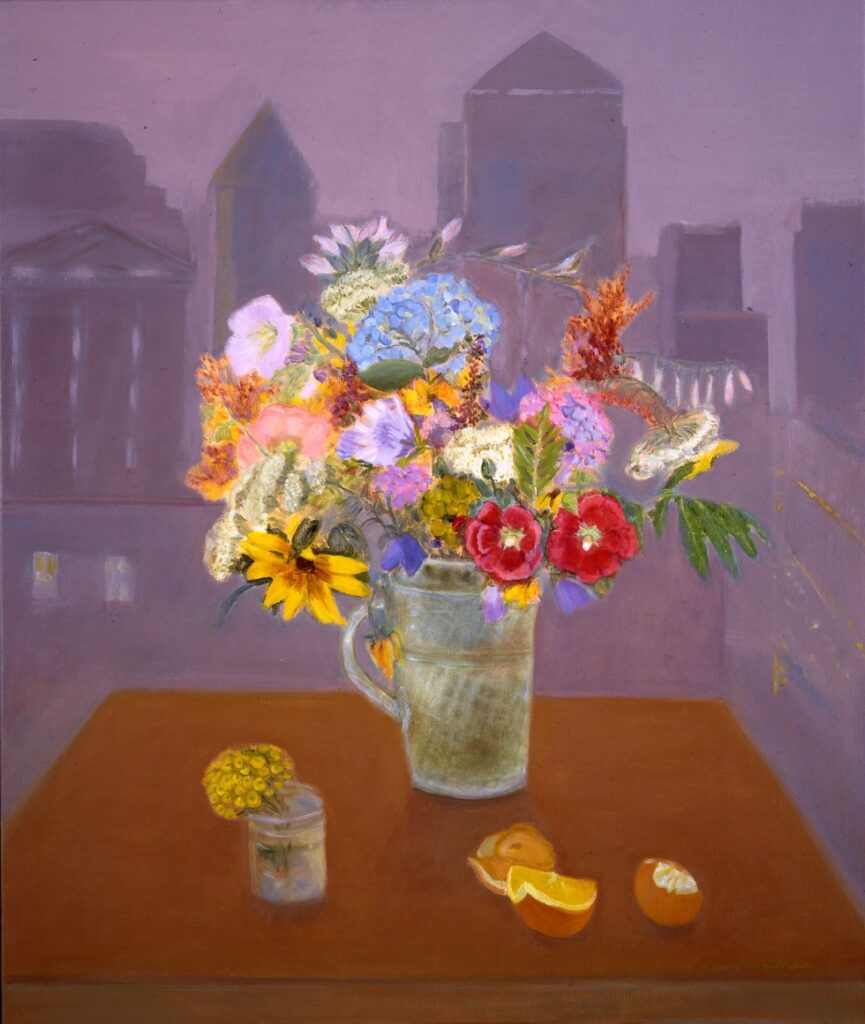
One could argue that by starting with real things, she had even more freedom to express emotions than an abstract expressionist—”who must—to some degree consciously—invent her imagery.”6
I really agree that her paintings “gradually summon fugitive emotions that are beyond words.”7
While she painted many of them, I feel that she could have painted even more of these same window scenes and them be varied and unique enough to interest me endlessly.
I’m curious, have you heard of Jane before? How do you feel about her art and story? Please let me know!
Works Cited:
- Artnet, “Jane Freilicher,” https://www.artnet.com/artists/jane-freilicher/
- The Telegraph, “Jane Freilicher – obituary,” https://www.telegraph.co.uk/news/obituaries/11310690/Jane-Freilicher-obituary.html
- https://www.theartstory.org/artist/freilicher-jane/
- Weinberg, H. Barbara. “Childe Hassam (1859–1935).” In Heilbrunn Timeline of Art History. New York: The Metropolitan Museum of Art, 2000–. http://www.metmuseum.org/toah/hd/hass/hd_hass.htm
- Artsy, “Jane Freilicher, American, 1924–2014,” https://www.artsy.net/artist/jane-freilicher
- Nathan Kernan in The Kasmin Review, “Jane Freilicher’s Interior Landscapes,” https://review.kasmingallery.com/weekend-long-reads/jane-freilichers-interior-landscapes/
- Peter Schjeldahl in The New Yorker, “Chez Jane,” https://www.newyorker.com/magazine/2002/09/02/chez-jane
All images in this post are Jane Freilicher’s paintings and from http://www.janefreilicher.org/

